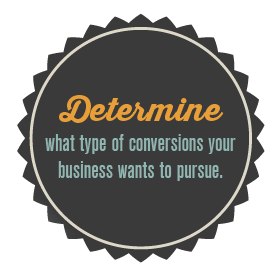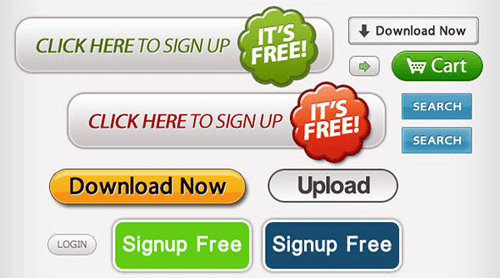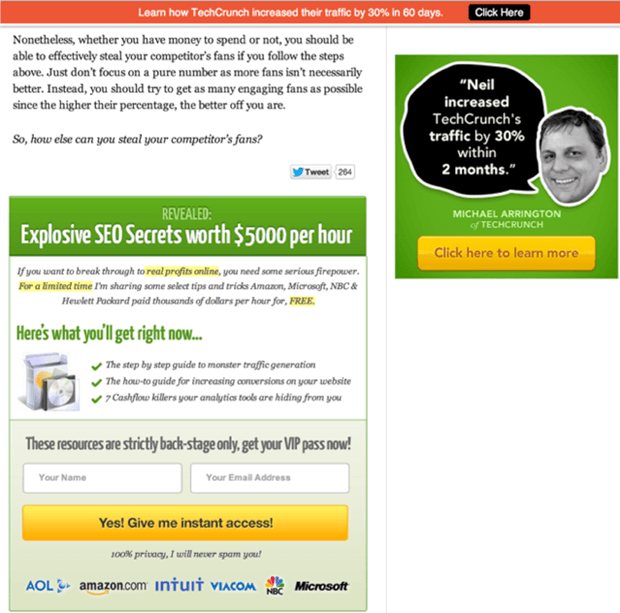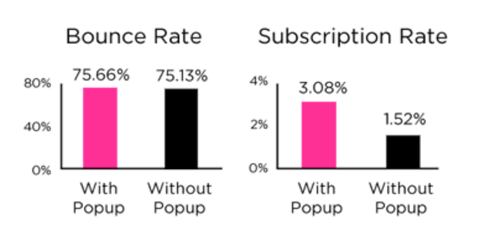Optimizing website content for conversions seems to be a hot topic these days. Up until a few years ago most business created their website with one goal in mind – to educate potential consumers of what product or service they offer. Many marketers knew very little about maximizing SEO and creating content that lead new viewers to your site. How times have changed…
Now content is KEY and optimizing your website’s content is not only a nicety, it is absolutely necessary if you want to use your website as a lead generator. If you haven’t already done so, it’s now time to refine your content in order to exceed your revenue goals. And, as we all know, revenue is generated by identifying the ideal audience and converting them into ideal customers.
This article will outline how you can optimize your website content marketing for conversions.
Determining Your Conversion Goals
Change is always preceded with goal identification. You need to determine what type of conversions your business wants to pursue with any given online marketing strategy. The three common conversion goals that affect your bottom line include the following.
Converting a website visitor into:
- a subscriber on your email marketing list, with a set funnel in place to turn the subscriber into a customer.
- a lead with the submission of a lead form for your products or services.
- a customer with the purchase of a product.
There are many other types of conversion goals that you can pursue, such as getting a website visitor to like your Facebook page or to subscribe to your blog’s RSS feed. However, the three goals outlined above are generally easier to measure in terms of ROI for your business, and therefore will be the focus for the rest of the guide.
Optimizing Your Blog Content for Conversions
A well designed blog can be a great tool for both your customers and your business. Blogs offer content that allow your audience to build a connection with your company. The articles you generate give you content for your social media interaction. Additionally, they can have significant impact on your SEO and lead-generation. With the high impacts and relatively low cost, your blog should be at the center of your content marketing strategy. However, your articles filled with juicy information are only serving half their purpose if they do not convert visitors into customers. Here are the elements you should look to optimize to increase your blogs conversion.
Blog Topics That Can Lead to Conversions
How do you choose topics to write about on your business blog? Writing content you think will be popular can certainly drive traffic, but it will not always drive conversions. Instead you have to think of topics that:
- Your ideal customer would be interested in learning.
- Would make your ideal customers more interested in the products and services your business has to offer.
- Naturally lead your ideal customers into a strong call to action to subscribe to your mailing list, submit a lead form for more information about your products and services, or purchase your product.
There are a few ways to discover topics that would fit these criteria. Start with what you know best: your product. Look at the questions your prospective and current customers are asking your sales and support team. Maybe there are common presale concerns that you can address in a blog post, which will give prospective customers confidence in your business right from the start. There may be a common support issue both you and your competitor struggle with. Addressing how to fix the problem in a well-crafted blog entry could give your competitor’s customers a reason to switch, and stay, with your business when they encounter the issue.
Once you’ve exhausted those avenues for topic ideas, you can move onto looking at what your top competitors are blogging about. If a competitor has been blogging for a while, they have likely already done research into the topics their ideal customers love. Generate your own creative content and improve their findings through other outside sources. Read through the comments on other articles and identify common questions that other blogs seem to ignore. Create a solution and address them in your own blog entry.
Blog Design Elements That Can Lead to Conversions
People need direction. If you want a website visitor to do something specific, you need to tell with a call to action. Making the assumption that they will leap from your content to your opt-in form, product page, or contact page will reduce your content’s conversion rate. Clear and inviting calls to action are an essential part of your content.
With your blog, you can start with a well identified “Comments” button. This allows users to give you feedback on your work while fostering a sense of community around your company. Requiring log-in information can be a great way to generate contacts that are interested in your product. Ensure your content is engaging enough to encourage the reader to participate in the discussion.
If you generate a white paper, create a blog post introducing the subject and highlighting what will be covered. Do not overlook the importance of the blog entry’s content, assuming the white paper will make up for it. You want to encourage your readers that the rest of the content is worth the read. The end of the post should have a call to action to access your report.
The easiest way to remember to add a call to action to each piece of content on your blog is to incorporate it into your blog’s design. This way, you don’t have to write about it within each blog post – it will just appear.
The strongest two areas to incorporate a call to action are within the sidebar of your blog and at the end of your posts. This can include the following.
- An opt-in form at the top of your sidebar that highlights your lead magnet, and one at the end of your posts that says, “Like this post? You’ll love our free [lead magnet].”
- A graphic highlighting a free trial offer for your product at the top of your sidebar and at the end of your posts.
- A contact form in your sidebar to enquire about your services, and a graphic at the end of your posts that invites visitors to find out how you can help them with the topic of your post and other services.
You can also use HelloBar, a piece of code that will add a bar at the top of your blog, which you can use for promoting your lead magnet, product, or services. If you look towards your top competitor’s blog, you’ll get some additional ideas on ways to convert your visitors.
No matter what call to action you present on your site, don’t assume that the first button you create will be the most effective. Color, placement, wording, and surrounding content all affect the conversion rate of your call to action button. There is no guarantee to what will work and what wont. You need to test different options and see what converts the most customers.
If you look at QuickSprout by Neil Patel, you’ll see conversion optimization of a blog in full force.
He integrates HelloBar at the top of his blog and a graphic in the sidebar marketing his services. At the end of his posts, he also markets a strong lead magnet that gets people onto his email-marketing list and into his sales funnel.
In addition to the above elements, he also incorporates a popup advertisement for his traffic course.
But doesn’t everyone hate popups? Don’t people just click out of them, maybe even leaving your site, irritated by your aggressive tactic? UpWorthy, a new viral content website that has experienced unprecedented growth, has had great success with popups.
Dan Zarrella, Social Media Scientist, did his own testing with his site. For almost two years, Dan had a popup on his site with the exception of about four months. During the time the popup was disabled, he found a drastic decrease in his subscription rate with no significant change to his bounce rate.
Although popups can be successful, you should still test their effectiveness with your own audience. Either way, if you are using advertising platforms such as Google AdWords, note that they have a policy against targeting campaigns towards pages with popups.
Despite all the potential for converting customers with these design elements, be wary about implementing too many of them. Even Neil Patel acknowledges that too many advertisements on a website can raise alarm in customers.
Thirsty for more? Learn how to convert your online content for optimization.
Sources
Andre, Marc. “Chapter 7: Guest Blogging”. ProfitBlitz. 31 March 2014. http://profitblitz.com/guest-blogging-gtpb/
Ciotti, Gregory. “Timeless Content Marketing Lessons from the World’s Fastest Growing Online Publication”. KISSmetrics. 14 Aug 2013. http://blog.kissmetrics.com/fastest-growing-online-publication/
Hines, Kristi. “The Ultimate Guide to Guest Blogging.” KISSmetrics. 10 Feb 2012. http://blog.kissmetrics.com/guide-to-guest-blogging/
Patel, Neil. “What Every Content Marketer Needs to Know about Conversion Optimization”. QuickSprout. 4 Jun 2014. http://www.quicksprout.com/2014/06/04/what-every-marketer-needs-to-know-about-conversion-optimization/
Patel, Neil. "How to Use Webinars to Convert Blog Readers Into Customers”. QuickSprout. 5 Sept 2013. http://www.quicksprout.com/2013/09/05/how-to-use-webinars-to-convert-blog-readers-into-customers/
Pulizzi, Joe. “The Ultimate Guide to Blogging”. Content Marketing Institute. http://www.contentmarketinginstitute.com/wp-content/uploads/2012/04/CMI_Ultimate-Blogging-final.pdf
Zhel, Martin . "How to Use Exit-Intent Popups to Grow Your Email List". https://www.mailmunch.co/blog/how-to-use-exit-intent-popups-to-grow-your-email-list/













